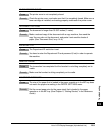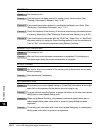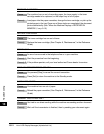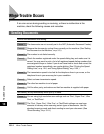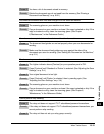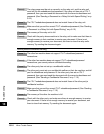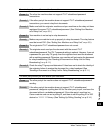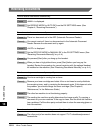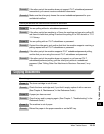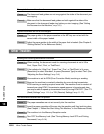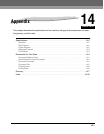
When Trouble Occurs
13-16
Troubleshooting
13
Remedy The relay group must be set up correctly on the relay unit, and the relay unit
must tell you the subaddress and password. If the relay unit has set an ITU-T
password, then you must send the document with the correct subaddress and
password. (See “Sending a Document to a Relay Unit with Speed Dialing,” on p.
6-12.)
Cause 3 The ITU-T subaddress/password does not match those of the relay unit.
Remedy Make sure that you set the correct ITU-T subaddress/password. (See “Sending
a Document to a Relay Unit with Speed Dialing,” on p. 6-12.)
Cause 4 The memory of the relay unit is full.
Remedy Check with the party whose machine is the relay unit to make sure that there is
enough memory in their machine to receive your document. If there is not
enough memory to receive your document, ask them to clear the relay unit’s
memory. Try sending the document again.
Cannot perform confidential sending.
Cause 1 The other fax machine does not support ITU-T subaddress/password
transactions.
Remedy If the other fax machine does not support ITU-T subaddress/password
transactions, you cannot perform confidential sending.
Cause 2 The other party has not set up a confidential mailbox.
Remedy The other party must set up a confidential mailbox on their fax machine, and tell
you the subaddress and password. If the other party has set an ITU-T
password, then you must send the document with the correct subaddress and
password. (See “Sending a Confidential Document,” on p. 7-12.)
Cause 3 The ITU-T subaddress/password does not match those of the other party’s
confidential mailbox.
Remedy Make sure that you set the correct ITU-T subaddress/password. (See “Sending
a Confidential Document,” on p. 7-12.)
Cause 4 The memory of the other fax machine is full.
Remedy Check with the other party, and make sure there is enough memory to receive
your document. If there is not enough memory to receive your document, ask
them to clear their memory. Try sending the document again.




